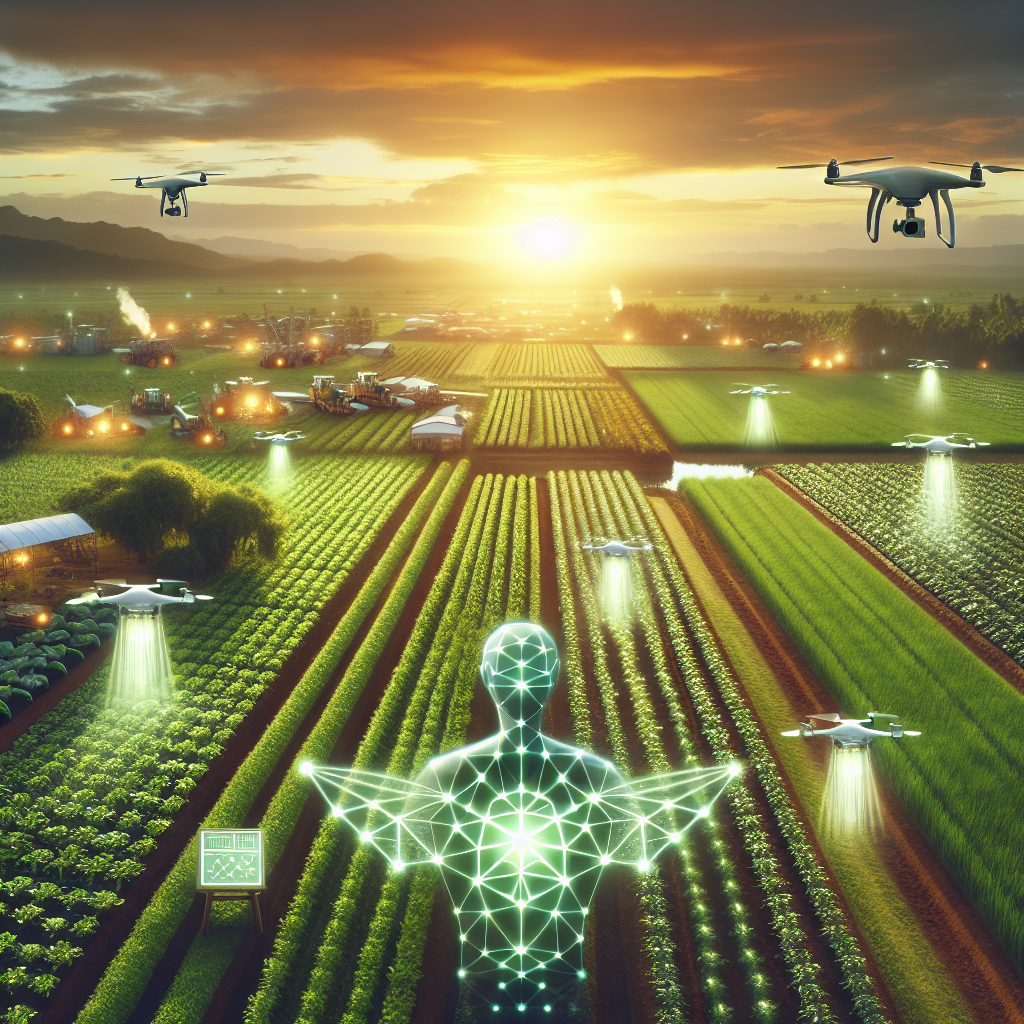In recent years, the agriculture industry has seen a significant shift towards incorporating artificial intelligence (AI) technology to improve sustainability and efficiency. AI integration in agriculture offers numerous benefits, including increased productivity, reduced environmental impact, and improved decision-making processes. From crop monitoring to precision farming, AI is revolutionizing the way farmers manage their operations and produce food for the growing global population.
One of the main advantages of AI integration in agriculture is its ability to optimize resource usage. By utilizing AI-powered sensors and data analytics, farmers can monitor soil conditions, weather patterns, and crop health in real-time. This information allows them to make data-driven decisions about when and where to plant, irrigate, and harvest, leading to higher yields and lower input costs. Additionally, AI can help farmers manage pest and disease outbreaks more effectively by identifying early warning signs and providing targeted treatment recommendations.
Another key benefit of AI integration in agriculture is its potential to reduce environmental impact. By using AI to optimize farming practices, such as precision irrigation and nutrient management, farmers can minimize water usage, chemical inputs, and greenhouse gas emissions. This not only benefits the environment but also helps farmers comply with increasingly stringent regulations and consumer demands for sustainable farming practices. AI can also help farmers adapt to climate change by predicting weather patterns and recommending adaptive strategies to mitigate risk and ensure crop resilience.
AI integration in agriculture is also driving innovation in the industry, with new technologies and platforms being developed to address specific challenges faced by farmers. For example, AI-powered drones and robots are being used to automate tasks such as planting, weeding, and harvesting, reducing the need for manual labor and increasing efficiency. Similarly, AI-driven predictive models and decision support tools are helping farmers optimize their operations by providing insights into market trends, input costs, and yield projections.
Overall, AI integration in agriculture is transforming the way food is produced, making farming more sustainable, efficient, and profitable. By harnessing the power of AI technology, farmers can overcome challenges such as labor shortages, climate variability, and resource constraints, and ensure the long-term viability of their operations.
FAQs:
Q: How is AI used in agriculture?
A: AI is used in agriculture in a variety of ways, including crop monitoring, precision farming, pest and disease management, and decision support. AI-powered sensors and data analytics are used to collect and analyze data on soil conditions, weather patterns, crop health, and pest outbreaks, allowing farmers to make informed decisions about when and where to plant, irrigate, and harvest.
Q: What are the benefits of AI integration in agriculture?
A: The benefits of AI integration in agriculture include increased productivity, reduced environmental impact, improved decision-making processes, and enhanced sustainability. By optimizing resource usage, minimizing input costs, and improving crop resilience, AI helps farmers achieve higher yields and profitability while reducing their environmental footprint.
Q: How does AI help farmers adapt to climate change?
A: AI helps farmers adapt to climate change by predicting weather patterns, identifying risks, and recommending adaptive strategies to mitigate the impact of extreme weather events, droughts, and pest outbreaks. By providing real-time data and insights, AI enables farmers to make informed decisions about when and how to adjust their farming practices to ensure crop resilience and sustainability.
Q: What are some examples of AI technologies used in agriculture?
A: Some examples of AI technologies used in agriculture include drones, robots, sensors, data analytics, predictive models, and decision support tools. These technologies are used to automate tasks, optimize farming practices, monitor crop health, and provide recommendations for resource management, pest control, and market insights.
Q: How can farmers adopt AI technology in their operations?
A: Farmers can adopt AI technology in their operations by investing in AI-powered sensors, drones, robots, and data analytics platforms, and partnering with technology providers, researchers, and agronomists to develop customized solutions for their specific needs. By integrating AI into their farming practices, farmers can improve efficiency, reduce costs, and enhance sustainability in their operations.

